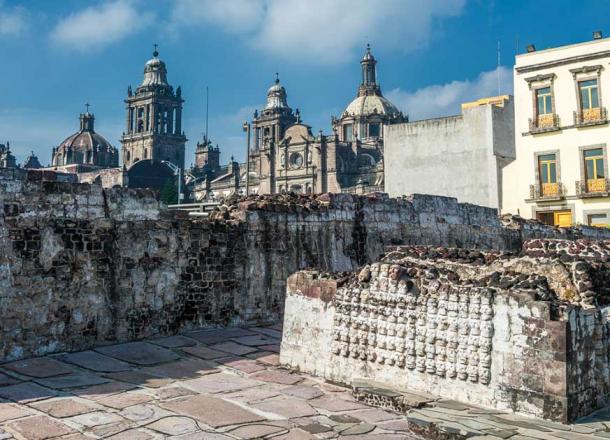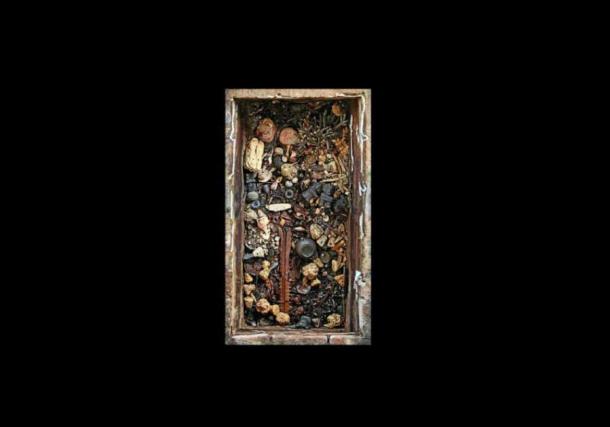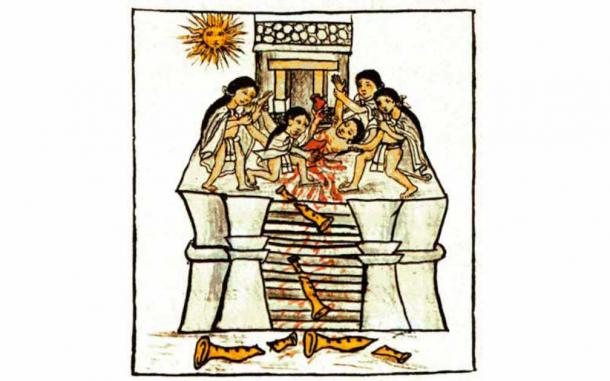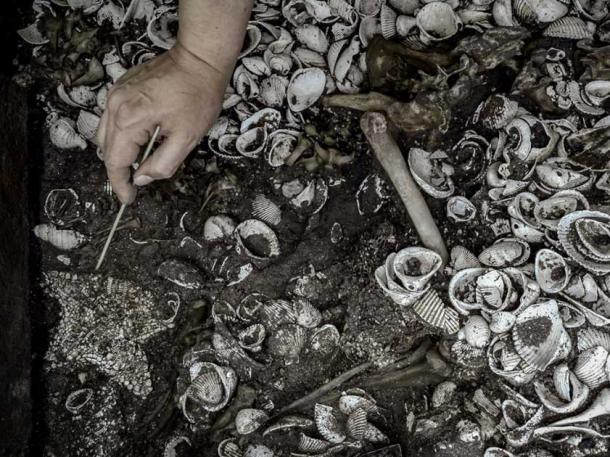Do the ritual offerings point to the tomb of the lost Aztec king?
Located in its capital, Tenochtitlan, present-day Mexico City, the Templo Mayor was the main temple of the native Aztecs, known today as the Aztecs. Buried at the center of a circular ceremonial platform associated with the Aztec patron deity Huitzilopochtli, archaeologists have uncovered an ancient trove of Aztec ritual offerings, including 180 coral branches, 165 red starfish, and a sacrificed jaguar dressed as an Aztec warrior. who seizes a sacrificed eagle.
Aztec priests packed up and buried these objects more than 520 years ago. Experts believe this indicates that it was once a highly sacred site. A strange lump found at the bottom of one of the treasure chests has led researchers to conclude that they have finally identified the lost royal tomb of Emperor Ahuitzotl, an Aztec king who reigned from 1486 to 1502 AD.

The treasure was discovered near the Templo Mayor in Mexico City. ( javarman / Adobe Action)
A great discovery will soon be made.
A report in the Daily Mail explained that the team of archaeologists began excavating the site in 2020 but was forced to stop during the 2021 lockdowns. Embracing a sacrificed eagle, the sacrificed jaguar was dressed as a warrior with an atlantean launcher. spear, copper bells tied around his ankles, and a carved wooden disc on his back dedicated to the Aztec patron deity Huitzilopochtli.
At the time, they suspected that all of these items, along with the 165 starfish and 180 coral branches, were buried atop the cremated remains of the Aztec king. Analysis of a mysterious bulge in the middle of one of the boxes suggests that the researchers were right. The chief archaeologist, Dr. Leonardo López Luján, has announced that a “great discovery” will soon be made.

An example of one of the offering boxes, number 126, which may lead archaeologists to locate the cremated ashes of the lost Aztec king. (Mirsa Islands / INAH )
Spanish records seem to confirm suspicions about Aztec kings
As the eighth ruler of the Aztecs between AD 1486 and 1502. C., Ahuitzotl deployed guerrilla tactics in the tribes of present-day Guatemala and along the Gulf of Mexico, triggering what is known as the Aztec Golden Age. According to the British, the Aztec king ruled the empire until 1503 AD, when he tried to escape the great flood that devastated Tenochtitlán in 1503, smashing his head against a stone lintel.
The Templo Mayor was rebuilt six times by different Aztec emperors and when Ahuitzotl died, two temples were dedicated to Tlaloc, the god of earth fertility and rain, and Huitzilopochtli, the sun god of war. When the Spanish conquistadors arrived in 1521 AD, the Templo Mayor was destroyed and the stones were reused to build the Metropolitan Catholic Cathedral of the Assumption of the Blessed Virgin Mary into Heaven.
Although the Spanish systematically destroyed Aztec architecture, they enjoyed keeping records. It is therefore not surprising that they noted the funeral rites of three brothers who served as Aztec kings between 1469 and 1502 AD According to Reuters the cremated remains of the three rulers were buried with luxuries and the hearts of sacrificed slaves “in or near the circular platform” in the Templo Mayor.

The body of a young man offered to Tezcatlipoca Huitzilopochtli found in the possible burial place of the Aztec king from the Spanish Codex by Bernardino de Sahagún. ( Public domain )
Discovery of Aztec king’s tomb would be “extremely important”
Joyce Marcus of the University of Michigan is an expert on ancient Mexican cultures. Marcus explained that the newly discovered offerings “illuminate the Aztec worldview.” He clarified that the artifacts speak of the Aztec “ritual economy” and demonstrate the “obvious connections between imperial expansion, warfare, military prowess and the role of the ruler.” These elaborate rituals and ceremonies, according to Marcus, were performed to “sanctify conquests, allowing tribute to flow to the ruler’s throne.
Archaeologists have so far located more than 200 boxes containing ritual offerings at this site. However, Dr. López Luján noted that “an Aztec royal tomb has never been discovered” and that the discovery of the tomb of the Aztec king Ahuitzotl would be “extremely important”.

The 2019 discovery of a sacrificed child, this time the remains of a 9-year-old boy buried with a set of flint knives decorated with precious stones and mother-of-pearl. She wore a necklace of jade beads, and priests attached falcon bone wings to her shoulders to resemble Huitzilopochtli, the Aztec sun deity and god of war.
Investigators suspect that the euthanized jaguar and the 9-year-old boy had their hearts ripped out during the ruler’s burial ceremony. In addition, the skulls of another dozen sacrificed children between the ages of one and six were removed from a nearby grave. While these children were sacrificed decades before the 9-year-old, they were all symbolically linked to the god Huitzilopochtli.

Archaeologist working during excavations at the Templo Mayor in Mexico City. (Meliton Tapia / INAH )
The search for ashes is on
Archaeologists also recovered hundreds of semi-precious green stones and a roseate spoonbill, a bird from the flamingo family. Copal incense sticks, a miniature wooden spear thrower and shield were found along with 21 flint knives designed to resemble Aztec warriors. Additionally, they recovered an intricate mother-of-pearl god disk similar to the one found with the sacrificed jaguar.
Researchers have concluded that an aquatic theme connects all of these ritual objects and offerings. This could mean that the sacrificed jaguar possibly represents “the aquatic underworld where the Aztecs believed the sun set every night”, or perhaps “the journey of the king’s soul after death”. Dr. López Luján says the goal is now clear: to recover the Ahuitzotl cremation urn which is said to contain the cremated ashes of the lost Aztec king.
Top image: The discovery of a cache of Aztec ritual offerings, including the remains of a Mexican wolf dressed as a warrior (seen here), has led experts to believe they may have found the tomb of an Aztec king. Source: Mirsa Islands / INAH
By Ashley Cowie




